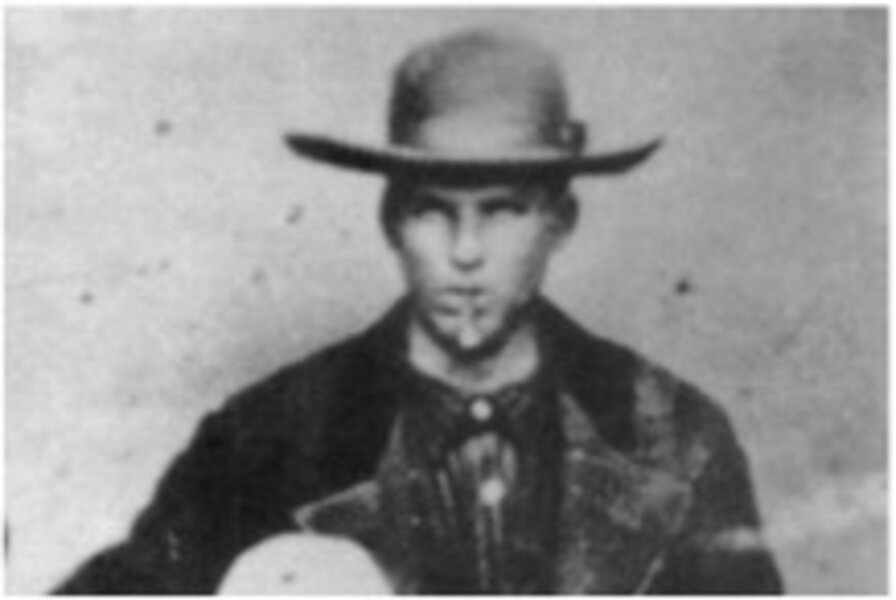Billy the Kid photo goes from $2 to $5M: How an outlaw became an icon
Loading...
Billy the Kid was a man of many names in 19th-century America: Billy Bone, William Bonney, William Antrim, and Henry McCarty (his legal name).
On one point, though, everyone was clear. The man stole cattle, fought hard, and killed innocent people.
In a dark bit of irony, a new photo of Billy the Kid – who killed as many as 22 – has surfaced just weeks after a shooter at Umpqua Community College in Oregon shocked the nation by killing 10 people.
And the memorabilia markets went wild.
Kagin's Inc., a company specializing in rare coins and Western Americana, announced the photo's discovery on Oct. 5. The photograph shows Billy and his gang playing croquet together in 1878 and has been appraised at $5 million.
The story of the photo's discovery – it changed hands for just $2 in a California junk sale – will be featured in a National Geographic documentary on Oct. 18.
The man born Henry McCarty has long inspired fascination. In 1938, Aaron Copland wrote a ballet called "Billy the Kid," and as recently as 2014, President Obama created the Organ Mountains-Desert Peaks National Monument in an area where Billy had carved his name on a rock.
Mark Handly, who lives near the monument, says the outlaw's actual life did not merit the admiration.
"I guess I like Billy the Kid, but wasn't he a murderer?" he asked The Christian Science Monitor.
In 2010, then-New Mexico Gov. Bill Richardson conducted an informal poll of voters who wanted to award the outlaw a symbolic pardon posthumously, reported the Monitor's Mark Guarino.
Some 800 emails came in, mostly in favor of pardon, but Governor Richardson backed out at the last minute after learning more about Billy's actions after being denied an earlier pardon, some 130 years ago.
"What I think maybe tipped the scales with me is that Billy went ahead after not getting this [earlier] pardon and killed two deputies, two law enforcement individuals, two innocents," Richardson told ABC News.
For some, it's baffling: How can the same nation that calls Chris Mintz a hero for standing up to a shooter on an Oregon college campus also lionize Billy the Kid, who gunned down innocents in 19th-century New Mexico?
Perhaps both represent a version of the idealized, rugged American.
In a Monitor review of a novel about Billy the Kid, book critic Merle Rubin wrote that the Kid was a motiveless, passionless killer who, by his very blankness, has become a canvas upon which modern Americans paint their own hero:
Feelings spent on Billy are feelings squandered: He's very close to what the German poet Rilke called a "doll" (Puppe, in German) – an object that wastes human love. It's a short step from doll to idol, and the biblical injunction against idolatry takes on new meaning in the age of matinee idols and instant celebrities, images without content that – like Billy – seem to consume so much of popular emotion. The stuff of legends, these figures are conveniently blank spaces on which people can project their own desires and fantasies.








